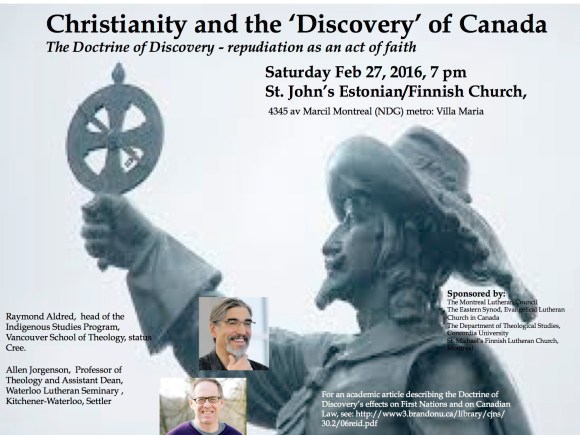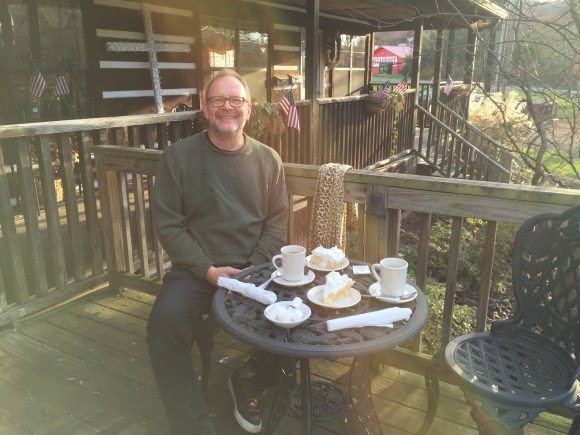Coming in February 2016. Watch for more details!

Coming in February 2016. Watch for more details!


The man who met us at the screendoor to Miss Lily’s Cafe was in his late 40s perhaps, wearing a tee-shirt, with a greying beard and ponytail, and smile lines around his eyes. He looked tired. He held the screen open, but only partly, blocking entrance with his body. “I’m sorry,” he said, not unkindly, “we’re closed. We’ve had a big day already. It’s Thanksgiving.”
“Oh. Okay. We saw the sign saying open,” I told him. “We know a lot of places are shut down early today but thought maybe we were finally in luck.”
“I guess I forgot to change that,” the man shrugged. “Sorry. We’re cleaning up now.”
“We were really hoping for a cup of tea,” my friend added.
Miss Lily’s Café had looked so inviting from the highway. It’s a rambling, log-cabin bungalow of a building, dark logs with white calking, a big front veranda and a red roof. We’d driven off the highway on a long curve that took us by a chapel – no cross but a big red heart on the steeple – and a few other cottages and outbuildings. Given the fact that when we pulled in we were the only car at Miss Lily’s, the truth was that we’d suspected it was already closed. But there were still iron patio tables out on the wooden deck, and streamers of American flags shared space around the windows with various Christmas nick-knacks. A stuffed snowman in an elf-costume stood sentry by the door, alongside a Christmas tree decorated in sparkling balls and straw ribbons. The place was too Smoky Mountain, and too enchanting, not to at least knock on the door.
“Oh for God’s sakes,” came a woman’s voice from inside. “Let’s just give them some tea.” The man turned his head around and said something to the woman, and then held open the door.
The woman – Miss Lily? – was sitting with her feet up at a little table inside. She had a glass of beer in front of her and a huge piece of some kind of pie, smothered in meringue. “Y’all just relax,” she said to us, although she didn’t move herself. “He’ll get something going for you.” She was going over some figures on a sheet of paper when she noticed me eying her pie. “Do you like coconut cream?” she asked.
“Love it,” I responded.
“And get them some pie while you’re in there!” she yelled to the man.
Within a few minutes we were set up with a pot of tea and two very large pieces of pie out on the deck. The afternoon Tennessee sun, and the tea, warmed us in spite of the cool mountain air.
When we finished we carried our cups and plates in to the café. Lily was still going over her figures, feet up.
“Did you like the pie?” she asked. I didn’t dare tell her that there had almost been too much. I told her the truth – it was delicious. There were probably still flakes of the tasty crust in my beard. “What do we owe you?” I asked. She waved her hand at us.
The holiday, clearly so important to everyone around us, had to that point in the day meant almost nothing to the two of us – a Canadian and a European, both foreigners. But hospitality is universal. “Happy Thanksgiving” Miss Lily smiled.


this is the second part in Sara and my discussion of pilgrimage, where we focus on the differences – and similarities – between pilgrimage and tourism, and Sara introduces the ‘Grand Tour’
(this is a guest blog posting on postmodernism and pilgrimage, by Sara Terreault, my friend and pilgrimage studies colleague. Her thoughts were inspired by the questions and comments posed by another of our friends and colleagues, E. Moore Quinn. Their back-and-forth conversation was too good, and too detailed, to leave in the comments section! MA)
Hi Eileen,
Fancy meeting you here: do you come here often? 🙂
Great questions. I should be grading papers but cannot resist jumping in. Here goes, a few note-form thoughts in response to your thoughts:
1) “postmodernism (cultural orientation)/postmodernity (historical time period)”: well, literally “after modernism/modernity”. So applies to cultures that have been shaped by modernism (or in short, the so-called “Enlightenment Project”), but have grown suspicious of modernist assumptions and values, so

a ten minute conversation with Sara Terreault, at Concordia, Montreal, about what makes post-modern pilgrimage post-modern!